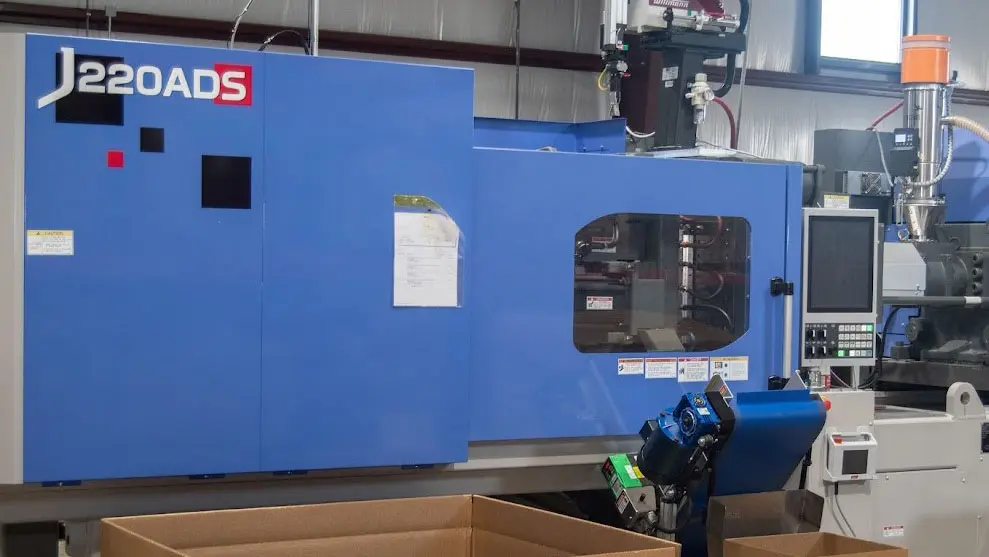Plastic Injection Molding Versus 3D Printing


Speed is everything in business. Faster service and faster deliveries lead to repeat customers. Regardless of whether you’re looking to shorten your product-to-market lead times on new designs, reduce manufacturing costs, or lower delivery times on existing products, both plastic injection molding and 3D printing are two options that can make all these outcomes a reality. But, these processes are also vastly different.
Understanding the primary differences between plastic injection molding and 3D printing will ultimately help you make a more cost-effective and informed decision on your next project.
Both plastic injection molding and 3D printing can produce accurate, durable, and robust plastic parts, components, and finished goods. It’s how and when to use these processes that differ.
Injection molding has been used to mass produce plastic components since the 1970s.
All plastic molded parts start in pellet form resin. A thermoplastic resin (polymer) is used in the molding process. Each thermoplastic resin has different molding parameters and is used for different products. The resin is held in a hopper above the plastic injection molding machine. The hopper gravity feeds the resin into a heated screw and barrel, which melts and mixes the plastic.
Once the plastic is molten, it’s injected into the mold’s cavity. The plastic part that emerges is a direct copy of the mold cavity’s design. The plastic component cools inside the mold and then continues to cool in the air after the plastic part is ejected from the mold cavity.
Plastic injection molding is the ideal solution for large production runs where the size, dimensions, and complexity of your parts are only limited to the size of your mold.
Plastic injection molded products are strong, durable, and can be free of the more appearance issues associated with 3D printed parts. Plastic molded parts have no voids, inclusions, or porosity. They are less likely to fracture, encounter excessive fatigue wear, or lead to catastrophic failure the way some machined or printed components do.
With injection molding, the higher your production volume, the lower your part costs, as you’re able to increase the number of part cavities in the mold. Increased mold cavitation allows for faster production rates to reduce the per-unit costs of the plastic molded parts.
There are several inherent benefits of choosing injection molding as your primary manufacturing process.
Although 3D printing has been around since the early 1980s, this process is still considered an emerging and constantly changing technology.
With 3D printing, a thermoplastic filament is used. Instead of molding parts from a resin, the thermoplastic filament is fed into the 3D printer’s extruder from the heating chamber. The chamber melts the thermoplastic filament, which is then fed through an extruder’s metal nozzle.
It’s referred to as 3D printing because the nozzle’s path is defined by a file containing the schematics or outline of a 3D object. Each pass of the nozzle deposits an additional layer of thermoplastic filament until the final product is complete.
During a part’s design or pre-production phase, multiple iterations of the part (prototypes) may be required before the design is finalized. 3D printing addresses this need by providing engineers and designers with quick turnaround on redesigns or engineering changes to the part.
A physical part helps engineers, designers, and quality control personnel test and validate the design’s fit, form, and function. They can measure the part’s viability as a stand-alone or assess how well it interacts within a larger integrated assembly. This helps to reduce design time while shortening the time it takes to move to full-scale production
The primary benefits of 3D printing include:
While 3D printing is great for prototypes and small production runs, it isn’t suited for large-volume production runs or parts with complex geometries and tight dimensional tolerances. Parts that require a specific surface finish or nice appearance are also not ideal for 3D printing.
Don’t make the all-too-common mistake of assuming that 3D printing and plastic injection molding are competing technologies. They aren’t. Each has a purpose, and they’re often used together within a given product’s lifecycle.
If your engineering team is in the middle of tweaking its design and needs a physical part to test and validate, then 3D printing is the solution. If you need a small production run of simple parts, 3D printing may also be the more cost-effective option. However, if you need production of several hundred or thousands of parts with unique properties and repeatable tight tolerances, then plastic injection molding is precisely what you need.
At MSI Mold, we understand that deciding between these two manufacturing processes can seem somewhat daunting. That’s why we focus on providing an all-encompassing solution. As a full-service plastic injection molding manufacturer, we offer rapid prototyping, custom injection molding, and mold-making/tooling design. We work with our customers to match a manufacturing solution to their needs. If you want to see first-hand how proactive we are, contact us today for a consultation.